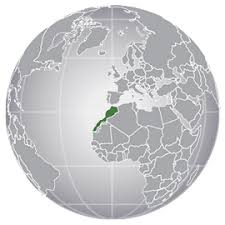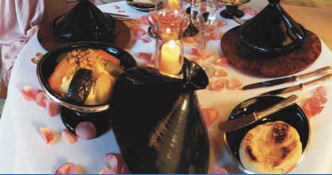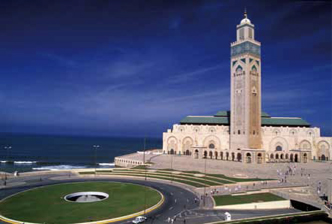Member Nation : Morocco

Morocco is the land of a thousand contrasts. With its diversity of landscapes, exceptional cuisine, and breathtaking nature, coupled with an extraordinary cultural and human heritage, Morocco is enticing. In Morocco, nature has given free rein to its imagination. From the Atlas to the Rif Mountains, from the Atlantic coast to the Mediterranean shores, from the wide sandy bays to small isolated rocky coves, from the southern large golden dunes to green oasis, the charm is boundless. From the luxuriant forests to the barren high plains, from the deep wadis to the incomparable caves, from the lakes and waterfalls to the daunting Kasbahs, Morocco’s wonders lie before you as far as your eye can see, endowed with history and wild beauty. A Country of unusual landscapes and memorable views, Morocco will surprise those who are curious enough to go beyond its trodden paths to discover its true nature.
Culture
In Morocco, culture is always on the agenda. Throughout the year, music festivals, artistic gathering, folk moussems glorify art in every region of the Kingdom. Let your Self be taken by the exalted atmosphere and enjoy an enchanting lyrical program.
Ethnic Cuisine

The imperial cities offer plenty of renowned dishes perpetuated from generation to generation. Heir to the thirteenth century Arab-Andalusian cuisine, Moroccan culinary art combines deliciously the sweet and salted, expertly using all sorts of spices and condiments: cumin, coriander, saffron, paprika, cinnamon... Ingredients found in the pigeon pastilla with almonds, a local recipe. The light puff pastry that envelops the filling is a specialty that Fez women transmit to each other from generation to generation. The Mrouzia is a great success of Fez gastronomy; initially prepared during the festival of Eid al-Adha (the «Feast of Abraham’s Sacrifice»), it uses an original blend of spices, the Ras el hanout, or literally «head shop», which is made of 35 and 45 different spices from Morocco but also from the Middle-East or Sub-Saharan Africa. Fish is also on the menu in Moroccan cuisine: Tuna tagine with raisins, monkfish with preserved lemon, sea bream with fennel and celery, and fish balls in saffron rice ... Moroccan cuisine also benefits from Berber products (argan oil, saffron, honey, almonds). The tagine is a Berber meal, and dates are a Bedouin delight accompanied by milk or Lben. The Moors introduced olive oil, almonds, fruits and herbs. Arabs brought the spices, not to mention the British, who, in the XVIIIth century, imported the famous tea which has become the national emblem. From traditional dishes to the famous pastries that Moroccan women only know the secrets, you can have Moroccan cuisine without moderation.
Ethnic Clothing
The traditional souks of the medina live side by side with the new district and their elegant fashion boutiques. The major western brands are represented in the Moroccan shops: Leather goods, clothing, jewelry, shoes, represent the modern side of Moroccan shopping. Today we are witnessing the development of a revisited Moroccan crafts. This marriage of tradition and modernity is an opportunity for ingenious discoveries and generates original quality productions that meet the contemporary sensibility. Many creators, Moroccan or foreign, redesign materials and tradition to create modern and trendy objects. Marrakech has become a temple of design.
Tourist Attractions
 />
/>
A country rich with flavors, contrasts, unsuspected treasures and new acquaintances, full of throbbing memories in the authentic medinas and the untouched alleys of its cities. A natural enclave, Morocco offers sports and adventure lovers all types of sporting activities including mountain biking excursions, rafting in the upper rivers, paragliding and hiking in beautiful deserts. Just as the beauty of its landscape will ravish the eye, the authentic welcome will warm your heart. In Morocco you will find enthralling hotels, unique in style, memorable hammams, soothing spas, thalassotherapy and balneotherapy centers with exceptional beneficial effects and virtues.
